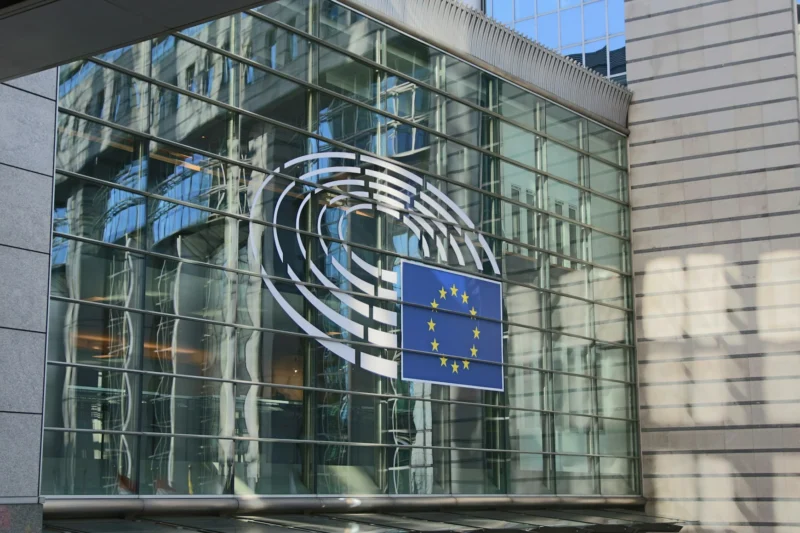
Lagarde Bratislava AI speech Nov 2025: key warnings
In the Lagarde Bratislava AI speech Nov 2025, Lagarde said Europe “has already missed the opportunity to be a first mover in AI” but can still be a “strong second mover” if it acts decisively. She tied that outcome to faster diffusion of existing tools across the economy, not only frontier research. Reuters and the ECB’s transcript aligned on that message.
Zoom in: Europe should remove adoption obstacles quickly so firms can scale AI in real use cases. She warned that “we risk letting the wave of AI adoption pass us by and jeopardise Europe’s future,” if action drags.
Timeline: Lagarde’s remarks at BratislavAI Forum
Lagarde delivered the keynote on 24 November 2025 in Bratislava at a high‑level, OECD‑linked forum. Event materials and the ECB page confirm the date, venue and her keynote role.
By the numbers:
- Date: 24 Nov 2025, Bratislava.
- Forum: BratislavAI, linked with the OECD and Slovakia’s Education Ministry.
- Role: ECB President as a keynote speaker.
Policy priorities to speed EU AI adoption
Lagarde’s playbook focused on the Single Market. She urged uniform rules that cut fragmentation and accelerate eu ai adoption across sectors.
Key steps she highlighted:
- Enforce open standards interoperability single market so AI systems plug and play across borders. This aims to reduce integration frictions for enterprises.
- Lower energy costs, which can otherwise slow compute‑heavy workloads and stall eu ai adoption.
- Harmonise regulation to shrink compliance variance, especially for cross‑border deployments.
- Integrate capital markets to channel more risk capital into scaling deployments, not just pilots.
- Leverage open standards interoperability single market to avoid vendor lock‑in and encourage competition.
Pros and cons:
- Upside: Faster diffusion, stronger competition, and lower switching costs across the Single Market.
- Downside: Standards work is slow, while energy relief and capital‑markets integration require political trade‑offs.
Reducing dependency: diversify AI supply chain and compute
Lagarde cautioned that “simply buying AI solutions from established providers will not be enough.” Dependency risks mount if Europe outsources the stack. Therefore, she argued for ai supply chain resilience europe across chips, models, and data centres.
The resilience agenda, as described, includes:
- Maintain minimum compute capacity europe to ensure baseline access in crises. Here, “compute” means semiconductor capability plus data‑centre infrastructure.
- Diversify critical supply‑chain layers to avoid single points of failure and improve ai supply chain resilience europe.
- Develop trusted cloud and model options at home while staying open to global partnerships.
- Commit to minimum compute capacity europe so public services and priority industries are never compute‑constrained.
Why urgency matters: avoid missing the adoption wave
Lagarde framed AI as a general‑purpose technology with large productivity potential. But delays compound. She warned that Europe could miss the adoption wave and put its future at risk if barriers persist and if firms hesitate.
By the numbers:
- Lead gap: The U.S. and China move faster on scaling.
- Constraint set: High energy costs, fragmented rules, and shallow capital markets.
- Remedy: Decide quickly, then execute at Single Market scale.
What Lagarde’s Bratislava AI speech means for Europe
The upshot: Europe can still turn a late start into an edge through disciplined deployment. A europe second mover ai strategy can prioritise diffusion, interoperability, and scale effects rather than a race to invent every component.
Practically, that means aligning incentives to deploy proven tools in factories, hospitals, and public services now. It also means treating capital‑markets integration, standards, and energy as AI policy so europe second mover ai delivers outcomes beyond pilots.
What’s next
What’s next: Watch whether the Commission and capitals move on five fronts in the next 6–12 months.
- Standards: Concrete frameworks for open standards interoperability single market to cut integration costs.
- Energy: Relief measures and grid upgrades to lower AI operating costs.
- Regulation: Steps to harmonise rules so cross‑border deployments face fewer frictions.
- Finance: Capital‑markets integration to scale funding for enterprise AI roll‑outs.
- Resilience: Policies for minimum compute capacity europe and a broader plan for ai supply chain resilience europe.
Sources
- Reuters: EU missing the boat on AI, jeopardising its future, Lagarde warns
- European Central Bank: The transformative power of AI: Europe’s moment to act
- El País: Lagarde alerta de que poner trabas a la inteligencia artificial “retrasaría la prosperidad de los europeos”
- .týždeň (via TASR): V Bratislave sa začína svetový samit o umelej inteligencii vo vzdelávaní

